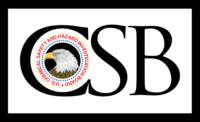CSB wraps up investigation into 2012 Chevron Refinery fire in Richmond, CA

 The U.S. Chemical Safety Board (CSB) this week will release its third and final report on the August 6, 2012, crude unit fire that occurred at the Chevron Refinery in Richmond, CA – and incident that endangered 19 workers and sent more than 15,000 residents to the hospital for medical attention.
The U.S. Chemical Safety Board (CSB) this week will release its third and final report on the August 6, 2012, crude unit fire that occurred at the Chevron Refinery in Richmond, CA – and incident that endangered 19 workers and sent more than 15,000 residents to the hospital for medical attention.
Gaps revealed
CSB Chairperson Rafael Moure-Eraso said, “The CSB’s investigation report identifies gaps in current industry guidelines and shortcomings in Chevron’s safety culture and emergency response. Our previous reports on this accident have found numerous safety deficiencies that occurred over the years prior to the vapor release and fire as well as root causes and safety recommendations which we are pleased to see California has begun acting upon.”
The draft report is on the CSB website a www.csb.gov. It addresses additional investigation findings that have not yet been covered in the two previously-approved reports.
The CSB’s third and final investigation report into the 2012 accident details failures in Chevron’s emergency response on the day of the incident. The draft report states that Chevron did not effectively identify a likely piping damage mechanism and the possibility of catastrophic rupture, and had no leak response guidance or formal protocol for operations personnel, refinery management, emergency responders, or the Incident Commander to refer to when determining how to handle a process leak.
Finally, the CSB found shortcomings in industry standards related to comprehensive inspection, effective facility upgrades and the need for minimum safety requirements. The American Petroleum Institute (API) have published several codes, standards, and recommended practices on sulfidation corrosion and response to hazardous process fluid leaks; however, the guidance is inconsistent and permissively written.
Recommendations
Based on the investigation findings the draft report makes recommendations to the American Petroleum Institute to establish and strengthen minimum requirements for preventing potentially catastrophic sulfidation corrosion failures and leak response safety guidance.
The report’s draft recommendations to Chevron seek to ensure more effective corporate oversight in the implementation of internal safety guidance and industry good practice. The draft recommends to Contra Costa County and Richmond, California improvements to their Industrial Safety Ordinance (ISO) to provide stronger regulatory oversight with community involvement to the existing safety culture review program for covered facilities such as the Chevron refinery.
About the CSB
The CSB is an independent federal agency charged with investigating serious chemical accidents. The agency's board members are appointed by the president and confirmed by the Senate. CSB investigations look into all aspects of chemical accidents, including physical causes such as equipment failure as well as inadequacies in regulations, industry standards, and safety management systems.
The Board does not issue citations or fines but does make safety recommendations to plants, industry organizations, labor groups, and regulatory agencies such as OSHA and EPA. Visit our website, www.csb.gov.
Looking for a reprint of this article?
From high-res PDFs to custom plaques, order your copy today!




